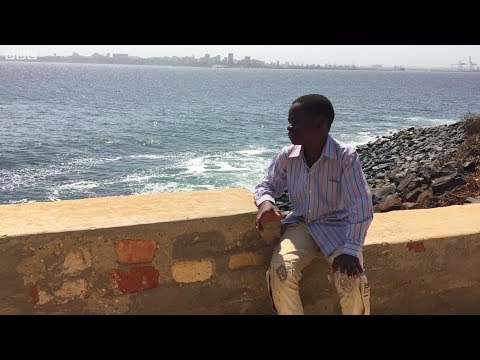
Nestled off the coast of one of West Africa’s most vibrant cities, Dakar, lies a small island steeped in history and poignant memories. Goree Island, or Île de Gorée, is a name that echoes through the annals of the African diaspora and evokes images of both haunting sorrow and resilient beauty. In this special feature by BBC What’s New?, we follow Mohamed, a local guide whose family has lived on Goree for generations, as he reveals the profound narratives embedded in its colorful architecture and narrow alleys.
### The Journey to Goree
Our journey begins with a serene ferry ride departing from Dakar. As the bustling cityscape recedes, the quietude of Goree Island comes into focus. Mohamed meets us at the dock, his smile a warm contrast to the solemn history we are about to navigate. His immediate connection to the island establishes an intimate tone for our visit.
### A Walk Through History
Mohamed leads us through the winding cobblestone paths lined with bright bougainvillea and pastel-coloured houses. Despite its charming exterior, each site unveils stories that are crucial to understanding the transatlantic slave trade’s brutal reality.
The most iconic stop is the House of Slaves (Maison des Esclaves). Its infamous “Door of No Return” presents a chilling gateway that saw millions of enslaved Africans forced onto ships bound for the Americas. Mohamed narrates how his ancestors witnessed these sorrows, emphasizing that while many consider this place a pilgrimage site to reflect on Black heritage and resilience, it is also a somber reminder of human cruelty.
### The Museum and Art Scene
Apart from its historical significance, Goree Island is also a sanctuary for contemporary African art and culture. We visit several galleries where vibrant artworks tell stories beyond slavery – celebrating African traditions, spirits, and daily life. Mohamed points out that these expressions are vital in shaping a narrative that isn’t confined solely to victimhood but radiates strength and creativity.
### Reflections at Sunset
As day yields to dusk, Mohamed leads us to the island’s highest point for panoramic views of the Atlantic Ocean. Here, he shares personal reflections about what it means to grow up in such an impactful place—caught between heartrending history and hopeful progress.
“Goree teaches us resilience,” he says softly as we watch the sunset paint fiery hues across the oceanic canvas. “It’s about acknowledging our painful past while forging paths toward healing and unity.”
### Conclusion: Looking Forward
Before parting ways with Mohamed and bidding goodbye to Goree Island, we stand once again at The Door of No Return. This time however there’s an air of contemplative optimism—a collective understanding that places like Goree should be remembered not just as sites of historical atrocities but as grounds from which societies can learn, heal, and aspire towards greater humanity.
Through Mohamed’s eyes—and those countless others who preserve such histories—we grasp more than just tales from bygone eras; we absorb lessons pertinent today amidst global conversations around race, history, and reconciliation.
BBC What’s New? has captured not just an educational journey but an introspective experience reminding us why remembering is crucial for global cultural consciousness.
